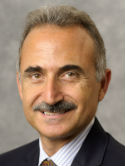Breast surgical site infections in patients undergoing lumpectomy with and without closure of defect Journal Article
| Authors: | Palmquist, E.; Kiernan, R.; Sevilimedu, V.; Le, T.; Morrow, M.; El-Tamer, M. |
| Article Title: | Breast surgical site infections in patients undergoing lumpectomy with and without closure of defect |
| Abstract: | <p>PurposePostoperative infection rates in the United States following breast cancer surgery, including mastectomy with or without reconstruction, range from 2-26%. Management of post-lumpectomy defects may involve simple skin closure or oncoplastic closure; however, the effect of defect repair on postoperative infection rates has not been well documented. Here we determine how oncoplastic closure of partial mastectomy defects affects postoperative infection rates and antibiotic use.MethodsIn this retrospective single-institution study, patients undergoing lumpectomy with and without oncoplastic closure of defect were included between 2018-2020. Clinicopathologic/treatment data were collected from medical records. Patients receiving antibiotics on postoperative days 5-30 were reviewed to confirm wound infection. Associations between demographic and clinicopathologic factors and postoperative infections were analyzed.Results3937 patients met eligibility criteria; 2273 (58%) had oncoplastic closure. The overall postoperative wound infection rate (includes cellulitis) was 8.4% (332), and true surgical site infection, as defined by the CDC (excludes cellulitis), was seen in 70 (1.8%) patients. On univariate analysis, age >= 60 years, diabetes, hypertension, and BMI >= 30 were associated with increased breast infection. Oncoplastic closure was protective against postoperative breast infections (odds ratio [OR]0.70, p = 0.040). On multivariable analysis oncoplastic closure had marginally decreased breast infection rates (OR 0.71, p = 0.053); however, this was not significant. BMI >= 30 was the only risk factor that remained a significant predictor of increased breast infection rates (OR1.63, p = 0.021).ConclusionsOncoplastic closure of lumpectomy defects had marginally significant lower rates of postoperative breast infections. As oncoplastic techniques are increasingly adopted in breast-conserving surgery, it is important to further study the protective nature of lumpectomy defect closure to reduce postoperative infection rates.</p> |
| Keywords: | cancer surgery; breast cancer; mastectomy; prophylaxis; partial mastectomy; wound infection; lumpectomy; association; risk-factors; antibiotics; 20-year follow-up; surgical site infection; seroma formation |
| Journal Title: | Breast Cancer Research and Treatment |
| ISSN: | 0167-6806 |
| Publisher: | Springer |
| Publication status: | Online ahead of print |
| Date Published: | 2025-09-13 |
| Online Publication Date: | 2025-09-13 |
| Language: | English |
| ACCESSION: | WOS:001570167300001 |
| DOI: | 10.1007/s10549-025-07819-y |
| PROVIDER: | wos |
| PUBMED: | 40940562 |
| Notes: | Article; Early Access -- MSK Cancer Center Support Grnat (P30 CA008748) acknowledged in PubMed and PDF -- MSK corresponding author is Mahmoud El‑Tamer -- Source: Wos |
Altmetric
Citation Impact
BMJ Impact Analytics
MSK Authors
Related MSK Work






